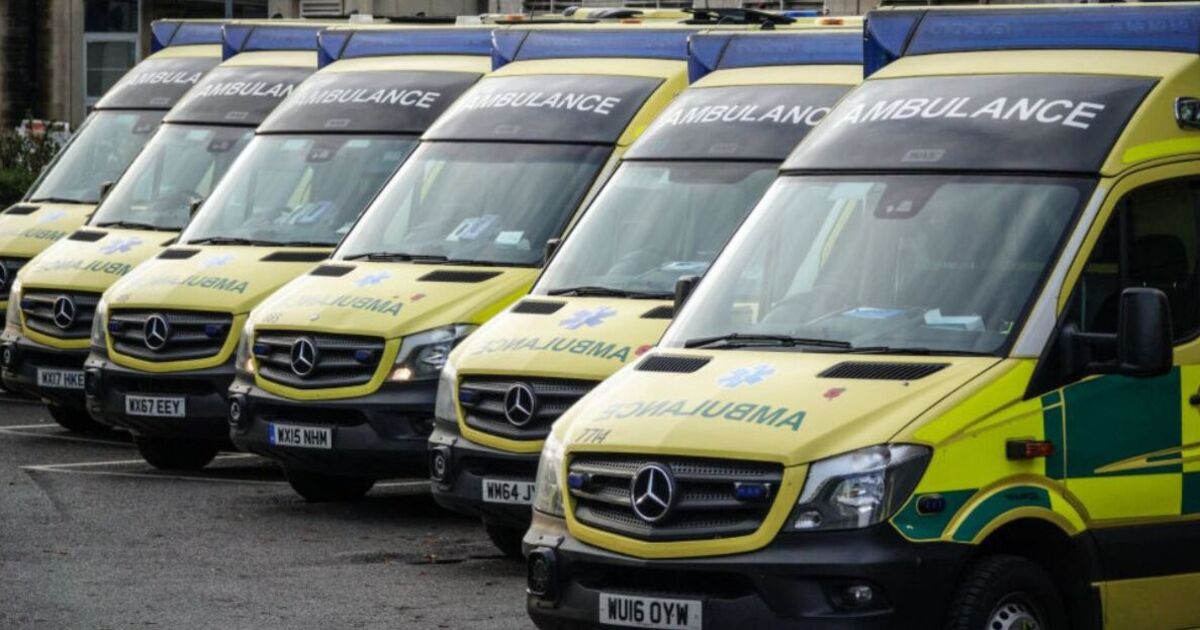Lengthy A&E waits could be responsible for more than 250 needless deaths each week, experts claim. The grim reality of an NHS struggling to cope under the weight of demand has been laid bare by the Royal College of Emergency Medicine (RCEM).
Analysis suggests patients are in grave danger, even after a decision to admit them to hospital has been made, because there is no room. Dr Adrian Boyle, President of the RCEM, said: “Excessively long waits continue to put patients at risk of serious harm. The direct correlation between delays and mortality rates is clear. Patients are being subjected to avoidable harm.”
It comes as public satisfaction with the NHS plunged to its lowest level in history, the damning findings of the respected British Social Attitudes survey revealed.
One consultant physician told this newspaper the NHS was drowning as it struggled to help the “very sick and the very stuck” as patients languished waiting to be seen, admitted, treated, and discharged. Some emergency departments are so clogged, with no spare capacity on wards, they are treated in corridors.
The NHS says 76% of patients attending A&E should be admitted, transferred or discharged within four hours. Yet data for March showed just 70.9% were seen within that time.
A month before the number waiting more than 12-hours in overcrowded A&E departments from a decision to admit to being admitted to a bed stood at 44,417.
The estimates for last year are likely to be conservative, according to the assessment by the RCEM, the independent professional association of UK emergency physicians, which carry out the immediate assessment and treatment of patients with serious and life-threatening illnesses and injuries.
It used a study of more than 5 million patients published in the Emergency Medicine Journal (EMJ) in 2021 as the basis of its calculations.
It found there was one excess death for every 72 patients spending between eight and 12-hours in A&E. The risk of death started to increase after five hours and got worse with longer waits.
Dr Boyle added: “Small improvements in four-hour access standard performance are not meaningful when there are so many people staying more than 12 hours.
“Effort and money should go where the harm is greatest. In 2023, more than 1.5 million patients waited 12-hours or more in major emergency departments, with 65 percent of those awaiting admission.
“Lack of hospital capacity means patients are staying longer than necessary and continue to be cared for by emergency department staff, often in clinically inappropriate areas such as corridors or ambulances.
“Urgent intervention is needed to put people first. Patients and staff should not bear the consequences of insufficient funding and under-resourcing. We cannot continue to face inequalities in care, avoidable delays and death.”
In 2022, the RCEM said it believed between 300 and 500 excess deaths were likely to have occurred in England each week using its methodology. It subsequently carried out a Freedom of Information audit of NHS trusts to refine this figure. This found that 65% of people waiting 12-hours or more in A&E are patients waiting for a hospital bed.
Professor Pat Cullen, General Secretary and Chief Executive of the Royal College of Nursing, said: “This crisis is taking lives and nursing staff in England’s hospitals are forced to witness it every shift. Go into any hospital, the corridors and cupboards are packed with patients – care is not only undignified but fatally unsafe. One nurse told me a lady had died on a trolley in a corridor and it went unnoticed far too long – that is the current state of our health service.
“Too few staff and not enough beds to admit patients safely is driving dangerously long waiting times and care in totally inappropriate locations. Nursing staff strain every sinew to hold it together with their colleagues but they now feel set up to fail. A crisis in emergency departments spreads throughout hospitals too.”
NHS data for England shows more than 1.5 million patients waited 12-hours or more in major emergency departments in 2023, meaning over one million of those were waiting for a bed.
When looking solely at patients awaiting admission, the RCEM calculated an average of 268 excess deaths are likely to have occurred each week in 2023, which is “only 17 fewer than 2022 when applying the same method”.
Patients delayed in the back of ambulances, “of which there are thousands”, are not included in the figures but are also at risk of harm. Last year the RCEM estimated 10,000 additional staffed beds were needed in England to cope with winter pressures.
The British Medical Association recently voted in favour of industrial action with a new mandate, approving the use of action short of strikes, until September 19.
Junior doctors have now been on strike for 34-days during an unprecedented rolling programme of action. But they have threatened to keep walking out for “the long haul” in effort to get pay restoration in a dispute that threatens to loom over the general election.
Professor Philip Banfield, BMA Chair of Council, said: “This Government isn’t listening to patients or doctors as they relay tales of 24-hour waits or more on hospital trolleys, frightened, lonely, feeling abandoned when most vulnerable and possibly, for some, on the last day of their lives.
“Privatisation of the NHS is already here, private providers are drawing increasing profits from the outsourcing of healthcare, including elective capacity, at a greater cost to the NHS and increased risk to patients. It is time for the Government and politicians to have an honest conversation with the public about the dire state of their health service.”
An NHS spokesman said: “We have seen significant increases in demand for A&E services, with attendances in February up 8.6% on last year and emergency admissions up 7.7%, and the latest published data shows our urgent and emergency care recovery plan – backed by extra funding with more beds, capacity and greater use of measures like same day emergency care – is delivering improvements, alongside continued work with our colleagues in community and social care to discharge patients when they are medically fit to go home, freeing up beds for other patients.
“The cause of excess deaths is down to several different factors and so it is right the experts at the ONS – as the executive branch of the stats authority – continue to analyse these causes.”









